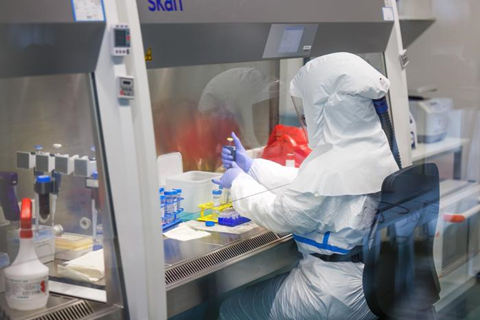More than 10 million people fall sick with tuberculosis (TB) every year. The disease remains the world’s biggest infectious disease killer with an estimated 1.25 million annual deaths. The disease is still found in every country, but certain regions, such as India, Central Asia and Southern Africa, bear a particularly high burden. Multidrug-resistant TB (MDR-TB) continues to pose a major public health threat, adding to the growing concern of rising antimicrobial resistance.

The traditional treatment regimen for MDR-TB is lengthy, expensive, and comes with severe adverse event. In 2022, the World Health Organization (WHO) endorsed a new 6-month regimen – the BPaL(M) – based on evidence of its improved safety and efficacy from numerous clinical studies, including TB-PRACTECAL.
New treatment regimen
“While this new regimen is a game changer for patients suffering from MDR-TB, we knew that it will be difficult to outsmart Mycobacterium tuberculosis, the bacteria causing TB,” said Sébastien Gagneux, Head of the Department Medical Parasitology and Infection Biology at Swiss TPH and senior author of the study. “It was therefore crucial to study how the TB bacteria would react to the global roll-out of this new regimen.”
READ MORE: Researchers seek out shorter, simpler TB treatments
READ MORE: Shared geographic origin of TB strain and human host could boost risk of infection
A study led by Swiss TPH in collaboration with the National Centre for Tuberculosis and Lung Diseases in Tbilisi, Georgia, published in the New England Journal of Medicine now examined in detail whether resistance to the drugs in the new regimen has already emerged since its introduction, and whether this resistance is transmitting between patients.
Transmission between patients
The researchers analysed the genomes of close to 90,000 M. tuberculosis strains from Georgia and many other countries around the world. They identified a total of 514 strains that were resistant to TB drugs, including both the old and the new treatment regimens. These highly drug-resistant strains were found in 27 countries across four continents.
Alarmingly, 28% of these strains were transmitted directly from one patient to another. “We already had anecdotal evidence of resistance emerging to the new regimen, but we did not know to what extent transmission was responsible for the spread of these highly drug-resistant strains,” said Galo A. Goig, postdoctoral collaborator at Swiss TPH and first author of the study.
“The good news is that the total number of these cases is still low. However, the fact that more than a quarter of these highly drug-resistant cases are due to patient-to-patient transmission, only two years after WHO endorsed the new regimen, is worrying,” added Goig.
Call for better surveillance and infection control
These findings have important implications for public health policy and interventions. “These new drugs have taken many years to develop, and to prevent drug resistance from emerging, it is essential to combine the deployment of these new regimens with robust diagnostics and surveillance systems,” said Chloé Loiseau, postdoctoral collaborator at Swiss TPH and co-author of the paper.
The authors emphasize the need for improved diagnostic tools, better infection control and robust surveillance systems to curb the spread of these highly drug-resistant strains, and to safeguard the efficacy of the new treatment regimen.
Tackling antimicrobial resistance
While there are already new TB drugs in the pipeline, experts worry that M. tuberculosis will continue to find ways to evade new drugs. “The example of these highly drug-resistant TB strains further illustrates that antimicrobial resistance is one of the most critical threats to global health today,” said Gagneux. “We must stay ahead in this constant race between drug development and bacterial resistance, and take proactive steps to prevent a ‘post-antibiotic era’ for TB and other diseases.”
The study was published in the New England Journal of Medicine. Swiss TPH led the study in collaboration with the National Center for Tuberculosis and Lung Diseases (NCTLD) in Tbilisi, Georgia. The work was supported by the Swiss National Science Foundation (SNSF) and the European Research Council (ERC).







No comments yet